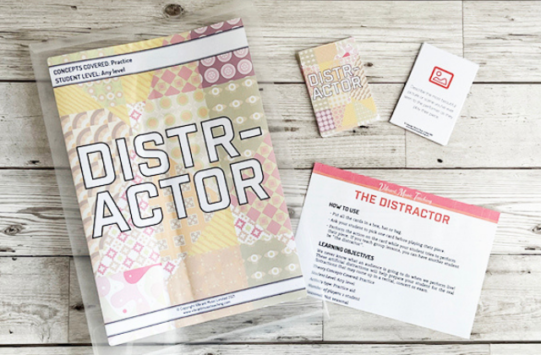
This blog post about audience etiquette at a piano recital was written by Carmen Carpenter. Carmen has taught music in a school setting as well as in her home studio for more than 30 years. Teaching combines two of her favourite things: music and kids! Besides teaching music, Carmen loves spending time with family playing games, working puzzles and watching movies. She’s also an avid reader and loves taking long walks on her local, woodsy trails.
As long-time musicians, many of us have forgotten that students and their families have to learn how to be good audience members. It’s been far too long for us, as teachers, to remember what we were taught – and when – about the proper audience etiquette for a music studio recital.

In whatever way you learnt how to behave in a recital, you now know instinctively when to clap, when to enter or exit the recital hall, what settings call for whoops and hollers and which ones call for quiet decorum.
That’s why it’s so hard to understand why our recital audiences act in ways that seem so obviously wrong or improper. The fact is, many of our students’ families have never attended a classical-type performance – professional or otherwise. Some haven’t even attended an orchestra, choir or band concert at their local school.
With that in mind, we need to teach our recital participants (and their families) all about etiquette and what it means to be a good audience member.
R-E-S-P-E-C-T (Find out what it means to me…)
When I used to be a substitute teacher in schools, I would tell the students that I had just ONE, 1-word rule. Then I’d invite the class to guess what the word might be. The students would say things like “mind-the-teacher” (no, that’s not 1 word) or “behave” or “listen”.
Eventually, after a few attempts, someone in the class would say, “respect”.
BINGO!
When “respect” is the focus of your actions, you’ll most likely do the right thing.
This “golden rule” doesn’t just apply to classroom behaviour. It’s also a handy guide for recital audience etiquette. Consider these examples:
- Silence your cell phone, and preferably, keep it tucked away in your pocket. Why? Respect
- Keep noisy candy wrappers in your purse. Why? Respect
- Maintain self-control and don’t yell out your kid’s name – even if you’re exceedingly proud of them. Why? Respect
- Stay for the entire concert so you can enjoy and support all the performers, not just your own child. Why? Yep. You guessed it: RESPECT
The list could go on and on, but you get the point. Rather than giving your recital audience a copious list of guidelines for audience etiquette, pare down the list to one:
Respect.
Because, let’s face it, the fewer the rules, the more likely people are to pay attention to them.
Encourage your recital spectators to ask themselves, “Would this be respectful?” when considering how they should or shouldn’t behave.

Here’s a true story: When my kids performed in their school’s band concert, there was a parent in the audience who would always work on their laptop until their own child’s group came out to perform. I’m certain that if that parent had asked themself if this was respectful to the performers and other audience members, they would’ve kept that device in its bag.
When Respect Doesn’t Cover It
As much as I absolutely, undoubtedly believe that humans acting respectfully could change the world, there are a few traditional recital audience etiquette rules that can’t be followed by simply asking yourself if you’re being respectful.
At the beginning of your recital, front-load your audience about some of the more common listener rules. This kind of behaviour management is respectful on your part and will make the whole experience much more pleasant for all involved.
Each situation involving an audience will have different behaviour expectations for the folks watching the performance, and every teacher approaches recitals differently. But here are a few simple rules that an audience should follow.
Appropriate Applause
Clapping after every song isn’t usually disrespectful. As musicians know, however, you should wait until the entire piece is complete before applauding – including all movements or variations. You can even give them this handy pointer: “When you see the student put their hands back in their lap, they’re finished”.
Plenty of concerts allow and/or encourage the audience to whoop, holler and whistle in response to the performances. If you’re having a pop-themed recital with drums, bass and guitar or an outdoor piano party, that sort of spectator response is not only expected, but encouraged – because it’s both appropriate and respectful.
But if your recital is a celebration of the great composers of the Baroque and Classical eras, whistling and stomping would likely be frowned upon.
Encourage your recital spectators to ask themselves, “Would this be respectful?”, when considering how they should or shouldn’t behave.
-Carmen Carpenter
Make sure you communicate and model what acceptable audience appreciation looks like so everyone is comfortable with how they respond to the performances.
When Nature Calls
I have no shame when it comes to asking people to make sure they (and their children) visit the lavatory before they sit for an hour (or more) during a recital.
But if that kind of announcement makes you squeamish, simply let people know that if they must leave the recital hall during the performance for any reason, they should only exit and re-enter between performers (during the applause).
Joyful Vocalisations
I’m certain that most of us want our recitals to be inclusive, kind and compassionate spaces.
As such, it’s important to be considerate of those in our audience who are very young, neurodivergent or have other special needs which might keep them from sitting perfectly still and quiet during the entire recital. We love that they’ve come to support their favourite musician, and we want to share the joy of music with them.
In my opinion, if they make intermittent sounds that only occasionally interrupt the playing, we should just let it go with a smile at the passionate expression of happiness that’s displayed.
That said, it helps to address your audience members at the beginning of the recital about what to do if the noise exceeds those few little moments.
You can do this sensitively when pointing out the exits at the beginning of the recital: “Exits are there and there. If anyone needs a little space to get those excess or over-the-top wiggles and giggles out during the recital, head for one of those exits. Just be sure to wait for a break between performers – when you hear applause – to come back in.”

The Distr-Actor is a fantastic game – exclusive to members of Vibrant Music Teaching – that prepares your students to deal with ringing cell phones, crying babies and jangling keys. Not a member? Check us out and join today at vibrantmusicteaching.com.
Remember, we need to be kind, compassionate and respectful not only to the student who’s performing, but also to their family who has come to see them play.
Make it Easy for the Audience
Certainly, there are plenty of acceptable ways to communicate audience member manners to your studio families. But I’d like to offer 3 ideas – with differing levels of effort – that you could try for your next studio recital.
Easy Peasy
With all the preparation necessary for your recital, make conveying the audience etiquette as quick and painless as possible. Try these tried-and-true methods:
- Make a quick announcement before the recital begins
- Send the tips in your pre-recital email
- List the guidelines in your printed program
- Put up posters in the entry area and inside the recital hall
- Assign your students the job of teaching their parents about audience etiquette before the recital
Need help remembering all those little details before your music teaching studio recital? Enter your info below and we’ll send you a free copy of the Recital Readiness Checklist as a thank you for reading our blog.

Subscribe to updates and get the Recital Readiness Checklist
Enter your details to subscribe to the newsletter for piano teachers with information, tips and offers.
I hate spam as much as you do! I’ll only send you information that’s directly relevant to music teachers and you can unsubscribe at any time.
Members of VMT can download the checklist instantly. Not a member? Check us out and join today at vibrantmusicteaching.com.
More Effort, More Fun
If you have a little more time and energy to expend – and you want people to pay attention and remember the rules – you may want to try ideas like these:
- Make a video with your students explaining the rules. Amp up the cuteness level by having the youngest students say the “hardest” rules to follow. Show the video at the beginning of the recital.
- Do a skit with willing actors from your student roster. You could have a group of 5 or so act as audience members misbehaving during a pretend performance from another student. Then they could freeze while a narrator describes what they’re doing wrong and what they need to do right. A bit like those safety videos you watch when taking a long-haul flight.
Preparing for an upcoming recital? You’ll love the ideas in the ‘Recitals’ section of our hub page devoted to running your studio business.
Bigger Bang for Your Buck
One of the best ways to ensure that your next recital audience acts in a way you like is to make them participants in the program rather than mere spectators. How about giving one of these ideas a go?
- Take a tip from American baseball games by leading the audience in a “7th inning stretch” about halfway through the program. Let them get up, stretch their legs and make a little noise. This makes it so much easier to sit still for long periods.
- Get inspired by basketball games and have a dance party break as a little intermission. Put on an mp3 and let the crowd go freestyle, or lead them in a ‘Chicken Dance’ or ‘Cha Cha Slide’ as a group. (This works especially well for longer recitals!)
- Give the audience members “jobs” by incorporating a compliment card system into your recital, as advocated by pro teacher Wendy Stevens. Then they’ll have to pay attention to someone besides their child, plus it gives them (and your students) something to do.
- Have a ‘Name That Tune’ activity. This is perfect for a winter/holiday recital where people know many of the songs performed. Give a prize to the person who gets the most correct answers.

Does your audience tend to adhere to traditional recital etiquette?
Tell us about it in the comments.